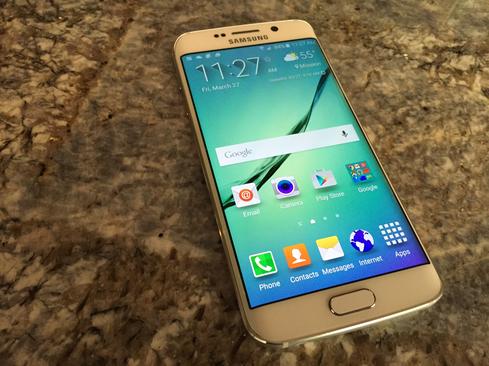Google's Project Fi will use a mix of cellular and WiFi to connect calls, messages, and data. Though inexpensive, Project Fi's focus isn't on the cash.

Samsung Galaxy S6 Edge: Night At The Museum
Samsung Galaxy S6 Edge: Night At The Museum (Click image for larger view and slideshow.)
Project Fi, the low-cost, invitation-only wireless service announced by Google on Wednesday, is aptly named. Google is jumping into the wireless game, but it's playing by a different set of rules that the search company hopes will alter the game altogether.
To start, Project Fi relies on a mix of wireless technologies to make connections.
Google partnered with Sprint and T-Mobile to provide LTE 4G cellular coverage, but the service will rely heavily on WiFi -- hence the "Fi" moniker applied to the service.
Project Fi works with a single handset, Motorola's Nexus 6. The Nexus 6 is able to hop between the LTE networks of Sprint and T-Mobile -- whichever provides the strongest signal in a particular spot -- thanks to advanced software. The software is tuned to prefer WiFi to LTE, however, and Google says the Nexus 6 will automatically -- and securely -- connect to one of more than a million free and open hotspots around the US. As subscribers move between LTE and WiFi coverage, the Nexus 6 will seamlessly switch between the various networks.
At least, that's what Google is promising.
Even though subscribers will be required to have a Nexus 6 smartphone, the service will work on other devices.
"With Project Fi, your phone number lives in the cloud, so you can talk and text with your number on just about any phone, tablet or laptop," explained Google. Customers' Project Fi number will work with any platform that supports Google Hangouts, including iOS, Windows, Mac, and Chromebook.
Misplace your Nexus 6? No worries. You can simply connect using another Hangouts-supported device. (This raises the question of why the $649 Nexus 6 is required in the first place.)
The technology pieces of the puzzle follow a course the industry has been on for some time. One need only look at MVNOs such as FreedomPop, Ting, and Republic Wireless to see similar business models.
Pricing And Changing Habits
What's more interesting is the pricing model Google has selected.
Google plans to charge people only for the exact amount of data they use each month. The basic service costs $20 per month and provides unlimited calling -- national and international -- texting, and Web access as long as you're on WiFi. If you wander out of WiFi coverage, you'll need to pay for a data plan. Google is charging a flat rate of $10 per gigabyte, so the basic service plus 1GB of data totals $30 per month.
[Read about the changes to Google's algorithm.]
Simple And Straightforward
Let's say you manage to stay connected to WiFi almost continuously and wind up using only 100MB in your first month. Since you only used 10% of your 1GB data allotment, Google will reimburse you for the 90% you didn't use, in this case $9. The intent behind this model is to crack open the larger carriers' use of something called "breakage." AT&T, Verizon, and others have convinced consumers to pay for defined buckets of data, such as 1GB, 3GB, or 5GB per month. People pay for these buckets, even if they know they won't use all of it, because they are afraid of being hit with extra fees.
In other words, the carriers have figured out how to get consumers to overpay for wireless service.
The key insight into Google's intent with Project Fi isn't obvious in anything it announced on April 22. Instead it harkens back to something Google's Sundar Pichai said while speaking in Barcelona in March: "Our goal here is to drive a set of innovations which we think the system should adopt," he said, likening Project Fi to the Nexus handset program.
Read that line again: Drive innovations the system should adopt.
Google wants to see the wireless industry change. It wants to see people connect to and use networks more seamlessly, use a variety of devices and platforms for base communication needs (calls and messaging), and, eventually, pay less for the wireless communication services they use. Google's goal isn't altruistic. The more connected people are, the greater the opportunity Google has to serve them ads, which, let's not forget, is still Google's main revenue generator.
Project Fi has clear limitations. Its compatibility with a single handset borders on the absurd. Google sells the Nexus 6 at the full $649 retail price, so there's no convenient payment plan to reduce the cost-of-entry here. Further, the monthly rates are essentially on par with the pre-paid offerings from Boost Mobile, Cricket Wireless, FreedomPop, MetroPCS, Republic Wireless, Ting, and Virgin Mobile. Switching to Project Fi isn't going to save you any cash.
Project Fi will, however, force you to think differently about how and where you consume wireless data. By opening users' eyes to what it really means to connect, perhaps Google will convince them to change their behavior.
Interop Las Vegas, taking place April 27-May 1 at Mandalay Bay Resort, is the leading independent technology conference and expo series dedicated to providing technology professionals the unbiased information they need to thrive as new technologies transform the enterprise. IT Pros come to Interop to see the future of technology, the outlook for IT, and the possibilities of what it means to be in IT.
About the Author(s)
You May Also Like








